Introduction
How Far Can A Pigeon Fly: The flight of a pigeon, a seemingly commonplace bird that has coexisted with humans for millennia, holds a mystique that transcends its unassuming appearance. Pigeons bread, often overlooked in favor of more glamorous avian species, possess an extraordinary range and endurance that continues to astound us. Pigeons, scientifically known as Columba domestica, are descendants of wild rock doves that once inhabited the cliffs and rocky outcrops of Eurasia and North Africa. However, they have adapted remarkably well to urban environments and have become a familiar sight in cities around the world.
Despite their adaptation to city life, pigeons have retained their remarkable flying abilities, and it is these abilities that pique our curiosity. One of the most astonishing aspects of pigeon flight is their homing instinct. Pigeons are renowned for their ability to navigate vast distances and return to their home lofts with uncanny precision. This talent has been harnessed by humans for centuries, making pigeons invaluable as messengers during wartime and for scientific research into animal navigation. The mechanisms behind their homing abilities have long fascinated scientists and have led to groundbreaking discoveries in the field of animal behavior.
Another intriguing facet of pigeon flight is their endurance. These birds are capable of covering long distances in a single flight, often far surpassing the expectations we might have for a bird of their size. Pigeon racing enthusiasts regularly release their birds hundreds of miles away from their home lofts, and the return journeys of these pigeons can be astonishing in their speed and accuracy. In the mechanisms of pigeon navigation, the factors influencing their flight range, and the remarkable feats achieved by these birds throughout history. By unraveling the mysteries of how far a pigeon can fly, we gain a deeper appreciation for the incredible world of avian capabilities and the profound connection between these unassuming birds and humanity.
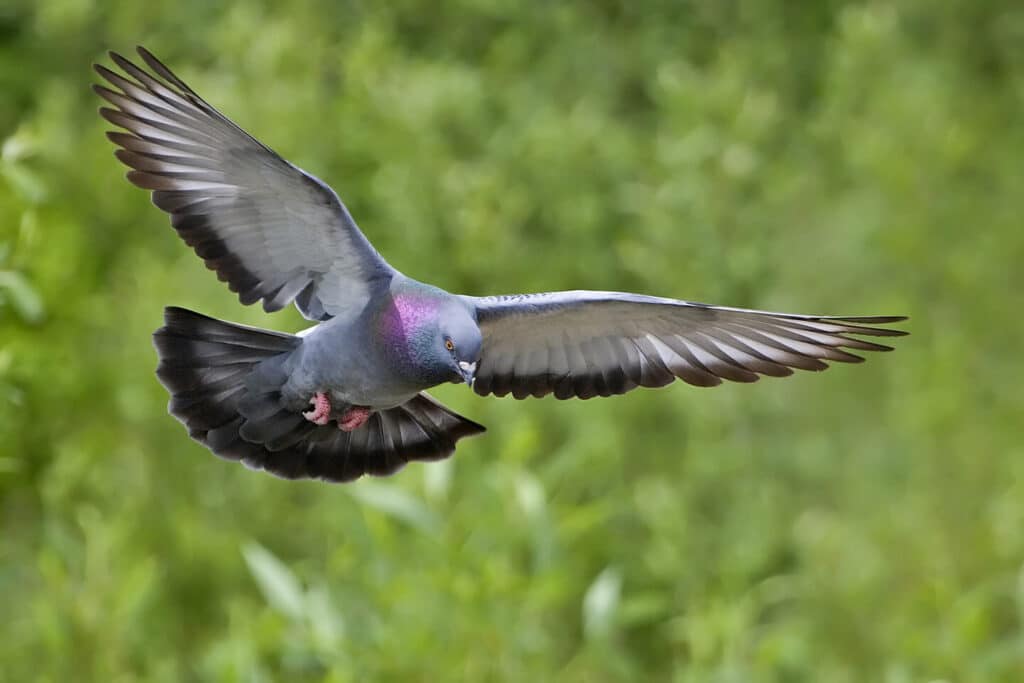
How far can pigeons fly without stopping?
Pigeons can fly between 600 and 700 miles in a single day, with the longest recorded flight in the 19th century taking 55 days between Africa and England and covering 7000 miles. Pigeons are thought to navigate by sensing the earth’s magnetic field and using the sun for direction.
One of the most well-documented pigeon feats in this regard is their role as homing pigeons. Homing pigeons, also known as messenger pigeons, have been used throughout history to carry messages across long distances. These birds were relied upon in wartime as a means of communication when more conventional methods were unavailable. Some of the most impressive documented journeys involve homing pigeons flying distances of over 1,000 miles to deliver vital messages. This exceptional ability to navigate and fly without stopping for such extended periods showcases the incredible endurance and navigational skills of these birds.
Pigeon racing is a popular sport in many countries, and it further evidence of the remarkable flight capabilities of pigeons. In pigeon racing, pigeons are released at considerable distances from their home lofts, and they compete to return as quickly as possible. Races can range from 100 to 600 miles or even more. Pigeons have been known to cover these distances in a matter of hours, demonstrating their capacity to fly without stopping for extended periods to reach their destination.
It’s pigeons, like all birds, have their limits. The maximum distance a pigeon can fly without stopping is influenced by various factors, including the pigeon’s age, health, weather conditions, and the availability of food and water along the route. Pigeons are not built for long-term sustained flight in the way migratory birds are. They rely on their incredible homing instincts, sharp navigation skills, and the ability to find suitable places to rest and refuel during their journeys.
How far can a pigeon fly to get home?
If taken a ways from home, though, they can find their way back home in a remarkably short period of time. In fact, homing pigeons have been known to find their way home from as many as 1,100 miles away, and they can travel an average of 50 miles per hour with bursts of up to 90 mph!
Pigeons’ homing instinct is their most remarkable attribute. When released at a location far from their home loft, pigeons can traverse impressive distances to return home with astonishing accuracy. These journeys are often referred to as “homing flights” and have been the subject of extensive research and admiration.
While Cher Ami’s flight was a remarkable example of a pigeon’s dedication to its loft, pigeons are known to achieve even greater distances. Pigeon racing is a sport in which pigeons are released from various locations and race back to their home lofts. These races can span hundreds of miles, and pigeons have been known to cover distances of 500 miles or more in a single flight. The speed and accuracy with which they complete these races are a testament to their homing abilities.
The exact range a pigeon can fly to return home varies depending on factors such as the individual pigeon’s health, age, weather conditions, and the terrain it encounters. Additionally, pigeons often use visual cues, magnetic fields, and environmental factors to aid in navigation during these long flights. Pigeons continue to captivate us with their exceptional homing instincts, showcasing the remarkable bond between these birds and their homes, no matter how far away they may be.
What is the longest distance a pigeon has flown?
It is claimed that the greatest long-distance flight recorded by a pigeon is one that started at Arras in France and ended in Saigon, Vietnam, back in 1931, according to pigeonpedia.com. The distance was 11,600 kilometers (7,200 miles) and took 24 days.
Armando’s extraordinary flight highlights the incredible abilities of pigeons when it comes to long-distance navigation and endurance. Pigeon racing, a sport that has captivated enthusiasts for over a century, continues to a platform for these birds to showcase their exceptional talents. While Armando’s record-breaking flight is particularly noteworthy, it is by no means an isolated incident, as pigeons across the world continue to amaze us with their ability to cover vast distances with remarkable speed and precision.
Armando’s crowning achievement occurred in 2018 when he competed in the prestigious “Barcelona International Race,” one of the most grueling pigeon races in the world. The race involves releasing pigeons from Barcelona, Spain, with the goal of reaching their home lofts located in various countries across Europe. The distance between Barcelona and many of these home lofts exceeds 700 miles (1,100 kilometers), making it a true test of endurance and navigation.
Armando covered the astonishing distance from Barcelona to his home loft in Belgium, which was approximately 625 miles in just under 9 hours. This remarkable flight made him the fastest pigeon in the history of the Barcelona International Race, earning him the title of “King of the Sky.” His achievement astounded pigeon enthusiasts and experts alike, solidifying his status as a legend in the world of pigeon racing.
Can a bird sleep while flying?
The long migration flights of many species don’t allow for many chances to stop and rest. But a bird using USWS could both sleep and navigate at the same time. There is evidence that the Alpine Swift can fly non-stop for 200 days, sleeping while in flight!
For most birds, sleep is a vital and vulnerable activity. They are particularly susceptible to predators while sleeping, so they have developed strategies to minimize this risk. Most birds sleep during the night, choosing secure roosting sites such as tree branches, cliffs, or nests. During this time, both hemispheres of their brain typically enter a state of slow-wave sleep, which is essential for physical and mental rejuvenation.
However, for birds engaged in long-distance migrations or continuous flight, taking extended periods of sleep on solid surfaces is not always feasible. To overcome this challenge, some species have developed the ability to sleep while flying, albeit in a highly modified form. Certain swifts and swallows also exhibit similar adaptations. These birds are often observed in continuous, agile flight while foraging for insects.
These oceanic birds are known for their incredible endurance during long-distance flights over the open sea. While in flight, albatrosses can rest one hemisphere of their brain at a time while keeping the other hemisphere awake and alert to navigate and respond to environmental cues. They alternate hemispheric sleep patterns, allowing them to maintain flight for extended periods without crashing into the ocean.
Can pigeons sleep while flying?
It is commonly assumed that flying birds maintain environmental awareness and aerodynamic control by sleeping with only one eye closed and one cerebral hemisphere at a time. However, sleep has never been demonstrated in flying birds.
Birds have evolved various mechanisms to address the need for sleep while ensuring their safety. Pigeons are no exception to this. They are diurnal birds, which means they are active during the day and sleep at night. During the night, pigeons typically find secure roosting spots, such as tree branches, ledges, or other elevated locations, where they can perch and sleep with both eyes closed. This behavior allows them to rest both hemispheres of their brain, which is crucial for their physical and mental well-being.
During the day, pigeons are usually active, foraging for food, and engaging in other daily activities. They do not have the same opportunities to sleep as they do at night due to the constant demands of staying alert to predators, finding food, and navigating their surroundings. Pigeons need to be aware of their environment during the day to ensure their survival.
Pigeons, like some other bird species, have developed adaptations that allow them to rest and recharge during the day without completely losing consciousness. They can enter brief periods of restful alertness, sometimes referred to as “microsleeps,” while maintaining flight. During these moments, one hemisphere of their brain remains active, while the other hemisphere experiences reduced activity, allowing for some degree of mental rest. This adaptation helps pigeons conserve energy during long flights and stay vigilant for potential threats.
Are pigeons intelligent?
Pigeons are incredibly complex and intelligent animals. They are one of only a small number of species to pass the ‘mirror test’ – a test of self recognition. They can also recognise each letter of the human alphabet, differentiate between photographs, and even distinguish different humans within a photograph.
Complex Navigation: Pigeons are renowned for their remarkable navigational skills. They can find their way back to their home lofts from unfamiliar and distant locations, a phenomenon known as “homing.” The exact mechanisms behind this ability are still under study, but it involves a combination of visual cues, the Earth’s magnetic field, and memory. This impressive homing ability has made pigeons valuable in scientific studies of animal navigation.
Memory: Pigeons have demonstrated excellent memory capabilities. They can recognize and specific locations, landmarks, and even human faces. In experiments, pigeons have shown the ability to recognize and differentiate between numerous images, including those of individuals. This memory capacity plays a crucial role in their homing abilities.
Numerical Abilities: Research has shown that pigeons possess basic numerical abilities. They can discriminate between different quantities and understand concepts like “greater than” and “less than.” While their mathematical skills may not rival those of humans, they demonstrate a level of abstract thinking.
Where do pigeons go at night?
As night falls, the birds, particularly pigeons, will look for ledges that offer shelter. These are often lower down on your building or nearby property. The pigeons’ overnight roosting spot is likely to be flat and partially or fully sheltered from the wind and rain.
Urban Roosts: In urban areas, pigeons often roost on buildings, particularly ledges, eaves, and architectural features that shelter from the elements. These elevated spots offer protection from ground predators and serve as communal sleeping areas for flocks of pigeons.
Trees: In more natural or suburban environments, pigeons may choose to roost in trees. They typically select dense foliage or tall trees with branches that a secure perch. This allows them to avoid ground predators and have a clear view of their surroundings.
Cliffs and Rocky Outcrops: Wild pigeons, such as rock doves, prefer natural roosting sites like cliffs and rocky outcrops. These locations mimic their ancestral habitats and secure perches away from ground-based threats. Some pigeons, especially those in urban environments, may utilize nesting boxes or cavities in buildings as nighttime roosting sites. These locations offer protection and warmth during the night.
Do pigeons come back if they fly away?
If your bird escaped from home, keep checking the surrounding house ledges, roof tops and power wires (they rarely perch in trees) as they are likely to come back and want to get in to their home. (They’ll be spooked and nervous, though, so don’t chase them.
Homing Instinct: Pigeons are known for their strong homing instinct, which drives them to return to their home lofts. This instinct is thought to be a combination of their keen sense of direction, reliance on visual cues, sensitivity to Earth’s magnetic field, and memory of their home location. As a result, when pigeons are released at a distant location, they often exhibit a strong desire to return to their loft.
Training: Homing pigeons that are raised and trained to recognize a specific loft as their home are more likely to return when released. These pigeons undergo gradual training, starting with short distances and gradually increasing the release distance. Over time, they learn to associate their home loft with safety and food.
Age and Experience: Older and more experienced pigeons tend to be better at finding their way back compared to younger, less-experienced birds. Pigeons improve their navigational skills through repeated flights and exposure to various environmental conditions.
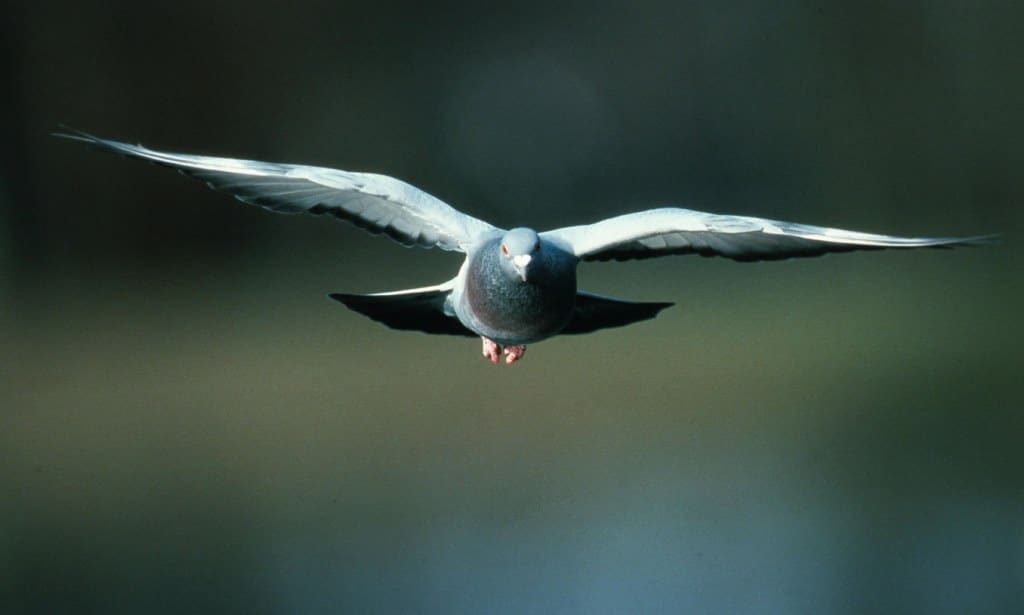
Conclusion
In the pigeon can fly, we have embarked on a fascinating journey into the world of these unassuming yet remarkable birds. Throughout this exploration, we have uncovered the astonishing capabilities that make pigeons stand out in the avian world. From their unparalleled homing instincts to their endurance in covering vast distances, pigeons continue to amaze and inspire us. One of the most pigeon strike revelations about pigeon flight is their homing ability. These birds possess an innate sense of direction that allows them to navigate across landscapes, cities, and even oceans with astonishing precision. This unique skill has not only earned pigeons a place in the annals of military history as wartime messengers but has also contributed to our understanding of animal navigation.
The endurance of pigeons in flight is nothing short of astounding. Pigeon racing, a popular sport in many parts of the world, showcases the birds’ ability to cover hundreds of miles in a single journey. These races are not just a testament to the pigeons’ physical prowess but also a testament to the bond that exists between humans and these feathered athletes. Pigeon enthusiasts invest countless hours in training and caring for their birds, creating a unique and enduring connection between species. Beyond the scientific and sporting aspects, pigeons have left an indelible mark on our cultural and historical consciousness. They have been symbols of peace, communication, and resilience.
The image of a messenger pigeon, soaring through the sky with vital information in tow, remains an enduring and powerful metaphor for hope and connection, especially during times of conflict and uncertainty. Pigeons have demonstrated time and again that they are not just inhabitants of our urban landscapes but also ambassadors of the skies, embodying the wonder of nature’s adaptations. As we continue to study and marvel at the abilities of pigeons, we are reminded of the intricate web of connections that bind us to the natural world and the endless mysteries that await our exploration.

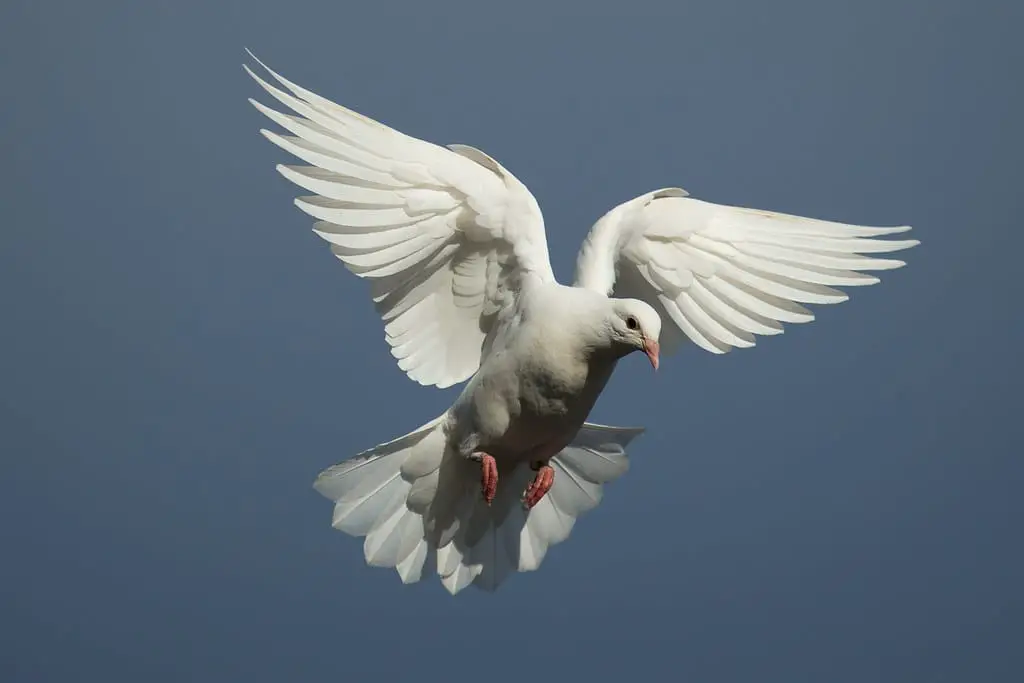
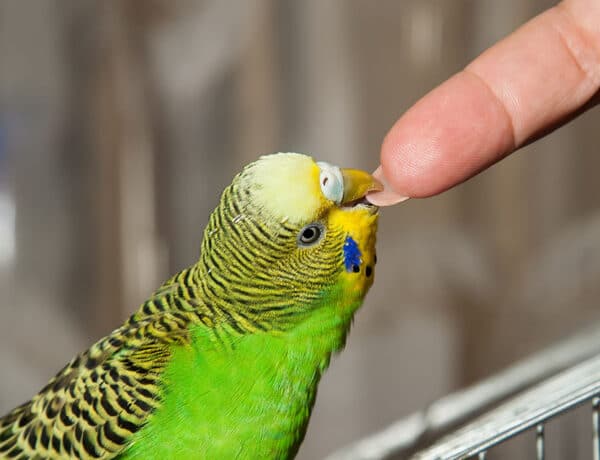
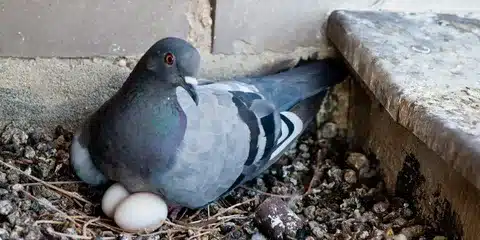

No Comments